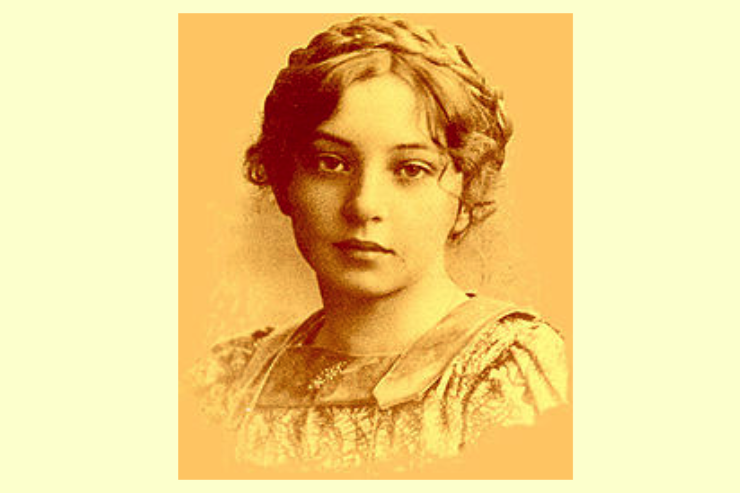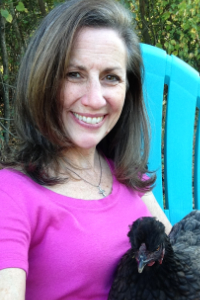A Guide for Reading Sigrid Undset
by Susannah Pearce | November 30, 2016 12:04 am

Sigrid Undset
If you must read Sigrid Undset—and I recommend you do—you’d better be prepared. Be prepared for an emotional ride. Sigrid Undset is a woman, by the way, and a major Norwegian author of the early twentieth century. A major author of everywhere, actually. And she ought to be still.
Start with Kristin Lavransdatter
You’ll probably begin with Kristin Lavransdatter because everyone will make you feel like you ought to have read it already. But let me warn you, you’re going to wonder if it was really a good idea. One friend who was nearing the end of the first volume (of three, written in 1920 – 1922), said that, though it was very good, it was so hard to endure all that the protagonist was putting her through that she wondered if she should continue with the next two. My advice was that she must—even knowing that ten years hence she will probably pull it out of the chest she has locked it in just to throw it against the wall once more.
There’s very little you can do about this, but read it you must. Not only because it is a very good book. Not only because the author was awarded the Nobel Prize for Literature in 1928 largely for this work. Not only because it will get deeply into you and you will never really get over it. You must read it because, let’s face it, it’s one of those books, written by one of those authors that will make you look really smart when you throw their names around.
Because Sigrid Undset was Norwegian, you will be reading a translation (there are two: the just-tell-me-the-story[1] version and the I-want-to-feel-like-I’m-reading-a-real-medieval-saga[2] version). Other people who share the goal of looking well-read will be using this author to try to impress you, so you’ll be wise to read several of her works. The good news is, if you’ve read Kristin Lavransdatter, the rest will be easy. Well, they won’t wreck you as much as this one will upon your first reading of it. (I’m not sure anyone ever really does read it again, it being so traumatic).
Here are a few tips to help you survive. The title is the name of the woman whose fictional life the story follows. Her last name simply means Lawrence’s daughter and it pronounced almost just like that, but with a “v.“ There! You’ll sound smarter already when that comes tripping off your tongue in an attempt to impress your bookish friends. (Think how smart I’ll sound when “A Guide for Reading Sigrid Undset” is credited to my writing!!)
It is set in the fourteenth century, so you can look forward to learning a lot about the brief Catholic period in Norway and amazing details of life during that time. Think of a world where, the colors of all the clothes came from nature and the plants from which they were derived only grew at certain times of the short growing season, so it was important to collect them when they appeared! Also, babies were dressed in swaddling clothes—like Jesus—diapers not having been invented yet.
More suggestions
When you recover from that book, I might suggest some of her other books. I myself have not yet read all of her novels. There’s only so much time to read and then recover before reading again.
Although Undset has set several of her novels in medieval Norway, it is not the medieval period that she specializes in. Many, including Images in a Mirror (1938) and Ida Elizabeth (1932) take place in the early twentieth century. Her brilliance in the medieval period, however, is owed largely to the early influence of her adored father, who was a widely regarded archaeologist. Before his early death when she was eleven, she had absorbed his interest in and love for Scandinavia’s back story, which she continued to delve into herself. This love for her country is woven through her works, but her focus is women. Women and love—complicated, often immoral, love. Undset plumbs the depths of the human person, allowing her reader to dip into the well of pain inherent in the challenges of romantic love, fidelity, responsibility, family and, ultimately, growth. Her protagonists suffer into becoming more fully human. And it is usually not a comfortable journey.
Sigrid Undset had a penetrating understanding of human nature. She also surely drew from her own experiences of longing for love, finding it in a difficult and problematic marriage, an intense maternal devotion to her own children. She set up her own family home with a deep sense of beauty and cultural tradition. She was not merely a Norwegian citizen; Norway ran through her veins. It runs likewise through her stories, which all take place in the various times throughout the landscape with which she was intimate. If you are unfamiliar with this beautiful landscape, I urge you to stop now and do a quick Internet search of “Norway scenery images[3].” Breathtakingly beautiful, yes? Sigrid Undset’s novels reflect this landscape in their depth and height and passion. And they will take your breath away!
Since I have no wish to leave you lying there with the wind knocked out of you, I will offer you a few suggestions for surviving this marvelous author’s works. Read about the author. The first biography I found (The Art of Compassion[4] by Yola Sigerson) was enlightening, but because it was written by a confirmed atheist who clearly disapproved of Undset’s conversion to Catholicism, missed much of the depth of the author as she matured. There are others, however, and I plan to read at least one other. Do read at least a sketch of her life. It clearly contributes to the brilliance of her fiction. It will also give you time to recover from one novel before irreparably plunging yourself into another bout of growing pains.
Here’s a tip I learned from the happy accident of my own experience. While reading Ida Elizabeth[5], I happened to also be reading Death Comes For the Archbishop, by Willa Cather (which I must tell you about another time). It is also an excellent book, but serene and peaceful. It gave me a place to retreat to, to smooth out the anguish caused by Undset’s book. I may not have survived outside of this method. Find a soothing book to read whilst reading one of her novels. You could even choose her own biography of St. Catherine of Siena[6] (1951)!
Another survival method I recommend is to read Undset’s non-fiction between the novels. There is much to choose from. Because she was Norway’s most famous author and was outspoken against Hitler, she was advised to escape her country in the earliest days of the Nazi occupation of Norway. Before the war was ended, she wrote of this journey—through Russia by train, Japan to San Francisco by ship and finally on to New York, where her publishers, Alfred and Blanche Knopf, helped her to settle in and make her living speaking throughout the country.
She lived in the U.S. for five uncertain years, looking with hope to a time when Norway would be free and would rebuild from the ruin and devastation wrought by the German occupation. She continued to denounce Nazism and urge the support of the allies by her host country. Her account of this time is found in her book Return To the Future[7] (1942).
During her exile, First Lady Eleanor Roosevelt suggested to Sigrid Undset that she write of happier times in Norway to give hope to her countrymen and help them keep in their hearts the Norway they were seeing utterly destroyed. The lovely little book that answered this request is called simply (and unsurprisingly), Happy Times in Norway[8] (1942). Undset also engaged in the debates of the day through essays, some of which are collected into books such as Men, Women and Places (1939).
The most rewarding tasks are usually difficult and require perseverance. I promise your perseverance through the works of Sigrid Undset will be rewarded—first by impressing your well-read friends. Next, and more importantly, by the enjoyment of reading a book you won’t want to put down (or at the very least, you will pick up again every time you hurl it against the wall). And finally, by imbibing her marvelous ability to vivify not only characters, but places. Her novels manifest the terroir of Norway!
Please both Share and Like this post on social media.

Susannah Pearce
Author Bio:
I’m a Catholic homeschooling mom of two, who supports Distributism (thinking small and local with regard to economics), universality (with regard to respect for the dignity of the human person), humor (with regard to humor), integrity (with regard to what we should strive for).
I’m from Southern California and am now living in The South with my husband (a writer) and two kids—and an unspecified number of chickens! I do many things badly because that’s often the best I can manage. Ever heard G.K. Chesterton’s quip? “Anything worth doing is worth doing badly.”
Susannah has a MA in Theology from Franciscan University in Steubenville and blogs at: Slow Going[9].
- just-tell-me-the-story: https://www.amazon.com/exec/obidos/ASIN/0143039164/slogoi-20
- I-want-to-feel-like-I’m-reading-a-real-medieval-saga: https://www.amazon.com/exec/obidos/ASIN/0394752996/slogoi-20
- Norway scenery images: https://www.google.com/search?q=norway+scenery+images&espv=2&biw=1366&bih=589&tbm=isch&tbo=u&source=univ&sa=X&ved=0ahUKEwjG06KS9ZfQAhXDRyYKHUgVA0AQsAQIGg
- The Art of Compassion: https://www.amazon.com/exec/obidos/ASIN/1425730507/slogoi-20
- Ida Elizabeth: http://www.ignatius.com/Products/IE-P/ida-elisabeth.aspx
- St. Catherine of Siena: http://www.ignatius.com/Products/CASI-P/catherine-of-siena.aspx
- Return To the Future: https://www.amazon.com/exec/obidos/ASIN/1886627126/slogoi-20
- Happy Times in Norway: https://www.amazon.com/exec/obidos/ASIN/0816678278/slogoi-20
- Slow Going: https://slowgoinglife.blogspot.com
Source URL: https://integratedcatholiclife.org/2016/11/pearce-a-guide-for-reading-sigrid-undset/